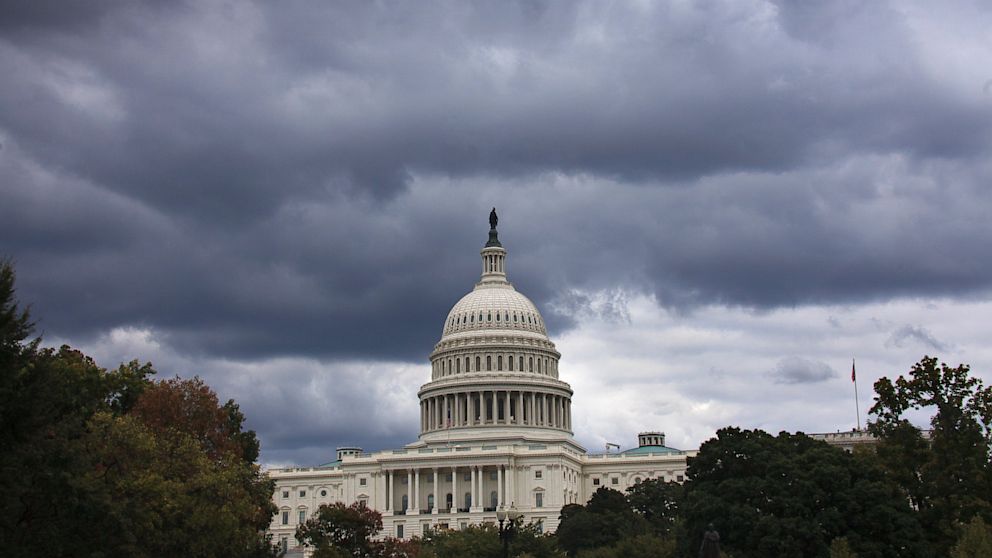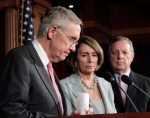Now that federal shutdown has moved from likely to reality, anxiety on Capitol Hill will shift focus to the debt ceiling and possible default of the country’s ability to pay on its debt after Oct. 17 and speculation into whether the individual battles merge into fiscal war or peace.
Videos by Rare
Tensions are high across party and chamber divides as a result of the back-and-forth arguments and continuing resolutions between the Republican-controlled House and Democrat-controlled Senate, and negotiations are at a stalemate for government funding. That makes the prospect for a compromise on the much more ominous-debt ceiling debate look even worse.
A government shutdown went into effect Tuesday and resulted in the immediate furlough of 800,000 federal employees and the immediate dysfunction of the majority of federal agencies and programs, with only absolutely mandatory spending programs like agriculture subsidies Medicare, Medicaid and Social Security exempt. Though Congress managed to pass a resolution guaranteeing military personnel pay, other essential federal employees like prison guards, Border Patrol and air-traffic controllers will continue working without pay.
The shutdown has driven a wedge between chambers and partisans already at their most divided since the Civil War, and each side continues to hurl it at the other in the media though the majority shown in polls largely saddles Republicans with the blame for tacking Obamacare funding to seemingly unrelated fiscal issues.
Government shutdowns are inconvenient but not catastrophic or totally uncommon — the last one occurred in 1996 under the Clinton administration, with another 16 before it since 1977 according to the Congressional Research Service. Discretionary spending, which allocates money for specific laws and programs for specific time frames, is interrupted if Congress and the president fail to agree on a new budget before the end of the fiscal year. Without a budget, the House has no frame of reference to pass traditional appropriations bills to define discretionary spending. Article I of the Constitution mandates these bills originate in the House.
In the absence of a budget, Congress and the president can agree to pass separate appropriations bills or continuing resolutions, which fund the government’s discretionary spending, until they can agree on a budget. The government has been without a traditional budget since 2009, making continuing resolutions the principal legislation for government funding in the wake of the growing partisanship and chamber divide since the start of the Obama administration. The latest continuing resolution expired at midnight on Tuesday.
Breaching the debt ceiling is a fiscal line the government has never crossed before — and one with potential global consequences. The debt ceiling sets an explicit limit on how much money the nation can borrow to cover the difference between its tax-revenue income and its spending, or how much outstanding debt it can hold. This includes public debt, like government bonds sold to individuals, and debt to federal trust funds like Social Security and Medicare, which the government regularly borrows from to fund its operations.
The Congressional Research Service reports Congress has voted to raise the debt ceiling 79 times since 1940 at an average of more than once a year until recent history. A prevailing common misconception that has made the issue contentious in modern hyper-partisan politics is that the debt ceiling allows the government to spend more money, contributing to an exploding national debt of more than $16 trillion and climbing. In reality, it allows the Treasury to borrow enough money to fund government services, write entitlement checks and pay bills that Congress has already approved via separate legislation (like the aforementioned budget).
Failing to raise the debt ceiling will not cut spending, but instead force the U.S. to default on loans it will eventually have to pay anyway, damaging the nation’s strong, long-standing credit rating and potentially hampering its ability to borrow money in the future. Globally, a default on federal bonds, which are considered a safety investment in the financial system, could slow an already frail national and global economy and erode investor and consumer confidence.
Raising the debt ceiling is outdated legislation conducted for the sake of form meant to try and curb spending by making Congress continually aware of it, but is, by most accounts, ineffective. Even still, breaching the limit would almost certainly be a failure at reform. The last time Congress came this close to a failure to raise the debt ceiling was in August of 2011, and the last-minute, day-of deal still resulted in a downgrade of the U.S. credit rating by Standard & Poor’s index from a perfect AAA to AA+ three days later.
With so much bad, publicized blood between parties and chambers over just the lesser of two crises, a compromise on either looks politically daunting. At present, neither side is willing to blink in the face of the media and public, with Democrats in particular seeming to have less to lose according to polls. Obamacare, signature Democratic legislation of the last four years that congressional Republicans fought this long to prevent, went into full effect Tuesday, with its present state possibly laying the foundation for fiscal war or peace by mid-October.
Related articles
- Debt ceiling worries Wall Street more than shutdown (bizjournals.com)
- Three Budget Battles, Three Different Economic Risks (blogs.wsj.com)
- After the Shutdown: The Debt Ceiling (newyorker.com)



